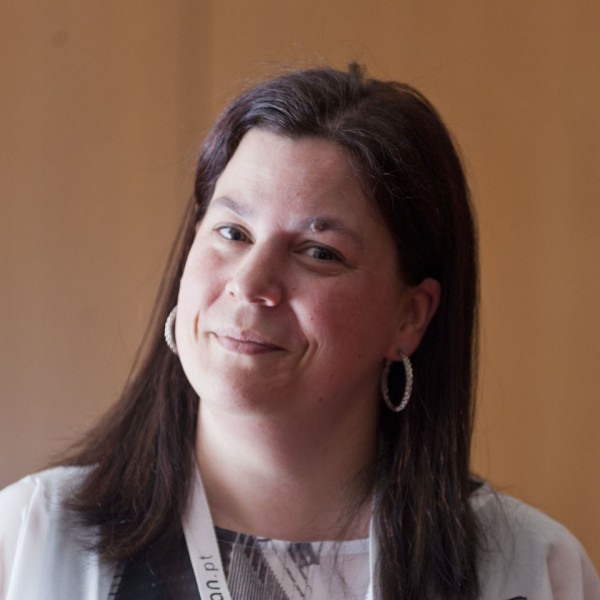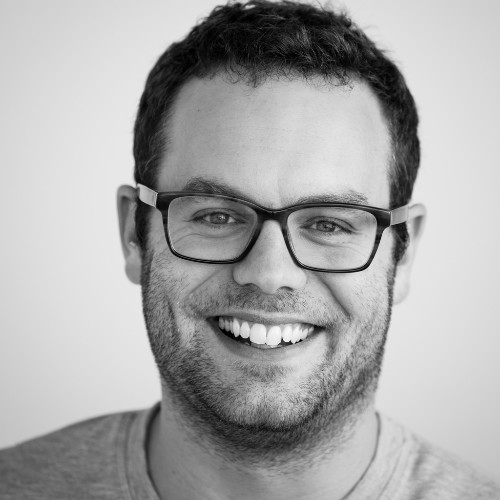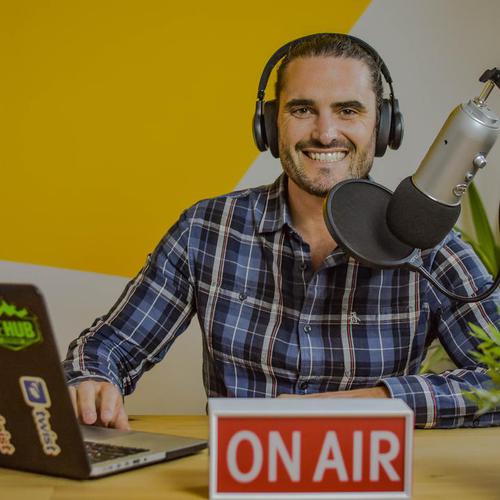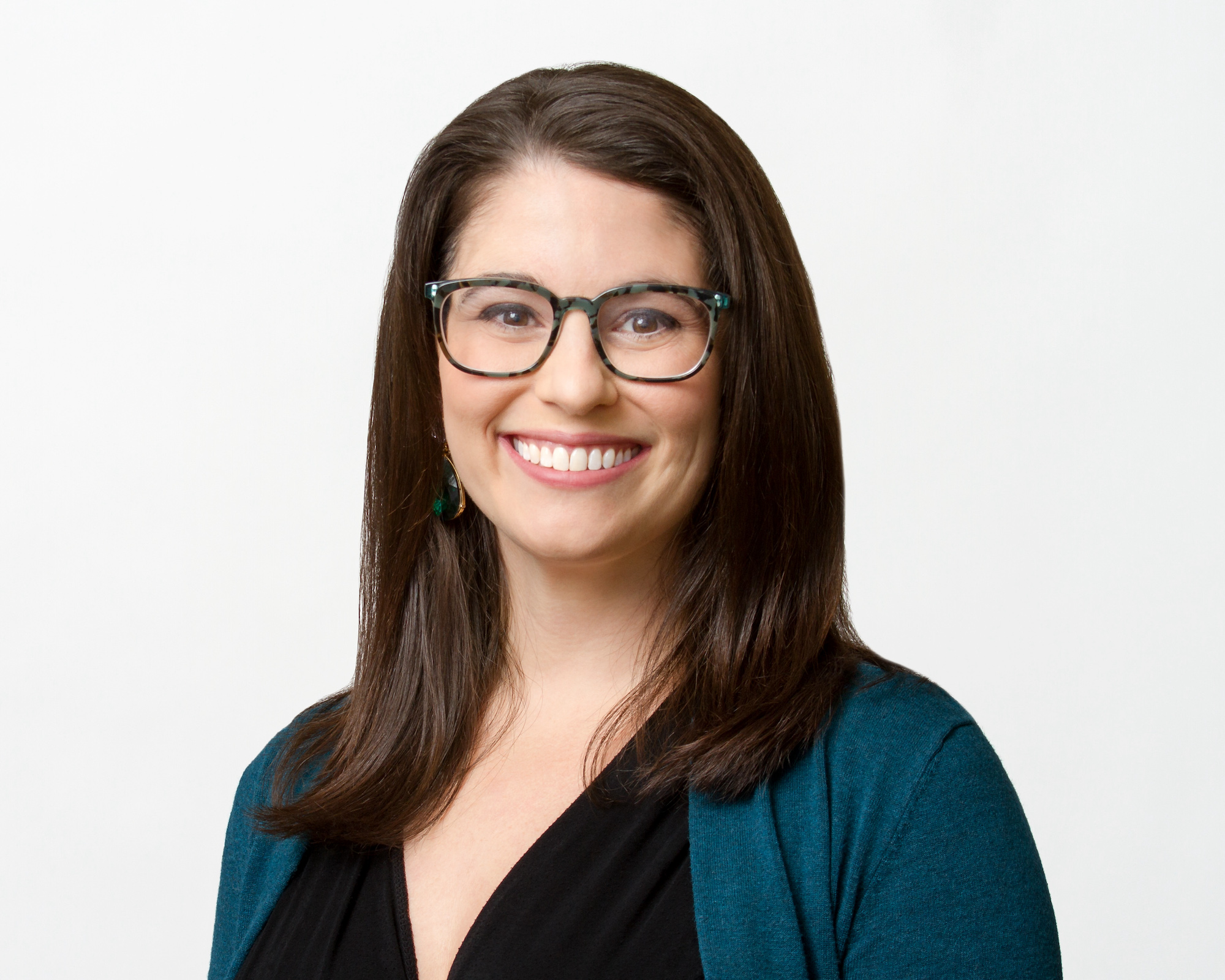Many large global companies were already practicing digital workplaces before the pandemic hit. With teams spread across the globe, they never had the ability to assume everyone would be in the same location.
So how did the pandemic impact these companies and what have they learned?
Stephen Hoelper is the President of North America for Doceree and shares his experiences.
Virtual brainstorming is actually great
Brainstorming is often one of the things leaders point to that can’t survive the transition from in-person to digital. But Stephen actually thinks it can still work well. He emphasizes a reliance on frameworks that work well no matter where people are. With the current level of technology, especially virtual whiteboards, you often don’t miss much if the brainstorming session is structured well.
But, Stephen says the biggest drawback is what happens after the session. In-person, people are usually energized (or exhausted) and go out for a meal afterwards. Those moments are key to a great team formation and culture and aren’t being replicated well in digital forms right now.
We’ve also got a lot of room to grow in the hardware. Everyone sitting on their laptops scattered around the world isn’t exactly a great digital experience. We’re all looking forward to better access to technology like telepresence that gives a much more real experience than staring at tiny boxes on a small rectangle.
Bridging the generational gap
Stephen is an elder millennial and he talked about how he’s in a position to help different generations understand each other well. There’s a lot that older generations are dealing with that Gen Z folks don’t have a framework for. The opposite is also true. Having lived in both worlds, older millennials and Gen Xers can build a lot of empathy across the spectrum.
Bringing a DEI lens to all decisions
Stephen and I talked about the importance of having diversity, equity, and inclusion on our minds whenever decisions about how we work are made. Rather than being a separate topic that comes up occasionally, DEI needs to have a seat at the table and be a filter for all decisions. Currently, the issue of broadband internet access is something many assume is the case, but still needs a lot of advocacy for marginalized groups.
Links
Welcome back to The Digital Workplace podcast. Today our guest is Stephen Hoelper. He is the President of North America for Doceree. Hey Stephen, how’s it going?
I’m doing well. How about yourself?
I’m very excited to talk to you. You have a great journey to get into to figure out where we are in this place of the digital workplace, but first let’s check to make sure you are a real live human. Stephen, your captcha question is, when you were eight years old, what did you want to be when you grew up?
I think I wanted to be an archaeologist, but not just any archaeologist, more like the Indiana Jones version, which is funny because a friend of mine I met later in life actually went to school to be an archaeologist. Professionally, he’s in software, but he actually does archaeology digs on the side.
Yeah, that’s good. I knew one guy in college whom I remember that was going to do that and it was just like, you’re just naturally cooler than everybody else because you’re into archaeology, right?
Seems fun to me.
But it’s got to be one of those fields when you’re actually in it, it’s really just brushing sand around, which doesn’t sound that much fun.
I think it’s like if you work in sales, so when you’re not selling something, it’s kind of a drag. So, maybe when you’re not finding something, it’s kind of a drag. But the second you sell something or find something that’s never been found before, it probably is super exciting, if I had to guess.
Yeah, probably. All right. Well, Stephen, tell us a little about Doceree and yourself. What’s been your journey in the digital world?
Sure. I’ll start with me for a second. So, I have about 19 years in digital health. And I’ve worked in all the industries, from employer, to the hospital space, to the pharmaceutical space. And it’s an interesting opportunity to see the industry from all around. So, at Doceree, we’re a digital marketing company, but what we do is, we exclusively work to match life sciences companies’ messages with physicians and other prescribers, and nurse practitioners, and physician’s assistants, if you’re not aware that they can prescribe as well. So, what we do is, we’ll create messages like new product launches for pharmaceutical products or medical devices, whether they can be used for a new indication, whether they have clinical data. And really, it’s about bridging the gap between life sciences companies and prescribers in a digital way.
So, we’ve been talking to a few people in the healthcare field. As someone who’s been in the industry for a while, seeing things from a lot of different angles, how would you describe the changes that have happened over the last, let’s just say, two decades, of new digital things coming in? Do you feel like someone coming in, as an objective observer would say, everything we did before, we’re just doing faster now? Or are we doing more digitally now? Or things have improved? Or things have gotten worse? What’s your take on that?
I’m trying to figure out where to start because a lot of healthcare that we experienced as consumers is about insurance. So, if you go back 20 years, they had these concepts of HMOs. So, you’d have to go to a primary care doctor and they would have to tell you where to go next. They were the gatekeeper. And the theory behind that is they would help to control costs.
Now, at that time, there wasn’t like a ton of technology to help you find the right doctor or do telemedicine. That just wasn’t there. So, that industry moved away from that model, sort of. And what you can see employers do right now is, especially during this course of the pandemic, they’ve been digitizing. So, virtual primary care, virtual specialty care, digital way to find a physician and figure out how much you’re going to pay for that visit. They’ve been talking, you know, virtual second opinions. So, they’ve been spearheading this augmentation of healthcare that they can control and provide an experience for their members.
Now, over the course of 20 years as you said, that just keeps getting better and better. So, the employers who are responsible for most healthcare spending and the most people are actually doing a nice job of making a good experience for their employees. Now, on the physician side of things, or the hospital side, they’ve been slowly and surely getting digitized. So, Obama had put some funding in place to get electronic medical records and e-prescribing in place. So, most of them have that. They’re at a tipping point where, how do they change the experience for patients and physicians and other practitioners of medicine by focusing on more user centered design. So, they’re in a state where they have digitization, they have their data sort of lined up. There’s still a long way to go. But they’re trying to figure out what it looks like to reach patients in a different way.
And you’ll see on the healthcare side, on the practice side, like small practice, specialists or physicians. They’ve embraced telemedicine because the laws have loosened up a little bit on state-by-state use of telemedicine and licensing. And we’ll see what happens when the pandemic gets more under control. But my opinion on that, that’s been a huge advantage. Although some people are not getting the services they would like, procedures that you have to go in-person, because there’s a lot of deferred healthcare happening right now that people may not want. I’m sure as an individual, you’ve put something off. But in mass, people are putting off treatment. And the saving grace here is the telemedicine providers. The telemedicine providers have allowed for access to physicians and other healthcare workers in a more easy way. And that’s been a huge convenience that I hope stays forever, quite frankly.
Definitely. I think that’s one of the best examples of a way that we’ve been able to embrace digital tools to take better advantage of, better respect for time, and just being able to treat people and to get in and to get around some of the things.
Yeah. I just want to say one thing very quickly about the pharmaceutical industry. So, one of the disruptions there is that the pharmaceutical reps have not been able to get into physicians practice because of the restrictions, especially like oncology, where the patients are at high risk. So, they’ve been trying to think through how they reach physicians in a digital way. That’s another big disruption that’s happened as well.
Definitely. Who do you think has benefited the most from digital changes in healthcare? And who is really wishing we could go back to the way it used to be?
That is a very difficult question. I would hope the answer is, the patient benefits. Because at the end of the day, that’s why people are in healthcare, to make sure that people and their caregivers like mom, dad, sister, brother, are having a good experience. Now, that’s what I hope the answer would be. I think the insurance companies right now, because of all that deferred care, are probably in a fairly good spot because a lot of care is not being used. So, the costs are down there. But I think the trickle on to that is when their costs are under control and you look at the hospitals and providers, they’re not making as much money.
So, here’s my fear. My fear is, what happens after this passes? Are they going to do rate hikes? Are they going to be forced to consolidate and that’s going to cause price pressure? I don’t know. I think there is some degree of stress on the physician side because they’ve had to change so much. They’ve probably adjusted to digitization to some extent. I think in the long run they’ll actually see that they can see more patients by doing a hybrid model and that’ll be to their advantage at some point.
So, each of the stakeholders has a different experience here. The thing that I’d say is the saddest is that people that had deferred care for a while, especially with more serious things like cancer, we’re probably going to see a spike in that over the course of the next three to five years, just because people hadn’t been getting some preventive procedures done over the course of this pandemic.
Yeah, for sure. There’s the natural or what’s been happening in the digital world for several decades. And then there’s the last two years which has been obviously like a totally separate story, but definitely related. It’s the same thing. It’s there. Well Stephen, let’s talk a little bit about what you guys are doing inside your company. So, tell us about, and you can even go pre-pandemic, post-pandemic, how that transition has been for you in terms of shifting your focus and the way you do digital work?
Yeah. So, pre-pandemic I think Doceree looked like a lot of other companies. So, you know, we have people in India, we have people in Europe and the UK, we have people in the United States. And the interesting thing about a global company is that your virtual is actually built into the way that you work, to start. But what you don’t get as much before it’s more like physical, everyone’s at a physical location, they’re collaborating today in-person. That’s the pre-pandemic landscape.
Now, in the during and after mode, it’s how do we virtualize to the extent that that’s possible, keep the right controls in place to make sure if there are people that are considered business critical, that they’re not infecting each other. And if they do, what controls are in place? Like the social distances, and masks and things like that. But in terms of the way we work, everyone here has embraced all the technology. We use technologies everyone else does for video conferences and collaborating to the extent that’s possible. We try to do virtual brainstorming sessions, which in my two cents, it does work pretty well.
So, you and I, right now, we have face time. So, I can see you well, you can see me well. You can hear me well. My concern is always when you go back to the big conference rooms that have a camera in the corner of the room and the audio in the center, how do you actually do that? So, sometimes we just don’t call in the conference room. We stay in our individual spots so we can hear and see each other with the people that are virtual.
Our other workaround is, ‘Okay, everyone bring your computer into the conference room and I will be unmuted, everyone else mute.’ So, we use the speaker of one computer. It’s the best we can do. But, to me, I respect more the face time with people that I do rather than have someone on the phone that I can’t see and hear that well.
Definitely. I feel meetings right now, especially these hybrid meetings we’re trying to figure out, we are just hacking our way through this. I feel in three years, we’re going to be like, ‘Oh, thank God. We’re not doing that anymore.’ Because we will have developed either meeting rooms which will get much more sophisticated. We will actually decide, okay, we need to invest some money and make a really nice room that has incredible audio, that has incredible video experiences, you can feel that a lot more. So, I hope that is what’s coming down the way. But I think what you guys are doing is probably best practice for right now, which is to get everyone on your own screen so you can see each other, and you can see those things there. And like you said, the worst thing is just when you have some subpar audio and video that’s on the side of the room and you can’t see people.
Yes.
Yeah, absolutely.
But you know, I will tell you from working and being in startups and being in large companies, I always think in the big companies like IT and audio-visual or facilities, they’re kind of different entities. So, they really, for some reason, haven’t been able to find the optimal way to cater to this new world. And even before this, audio-visual was not great. And these are companies that have a lot of money. Because you have to do it in 100 rooms per location. It’s not easy, it’s not cheap.
There was one time I was in what they called a ‘telepresence’ room. That was pretty cool. And this was maybe 10 years ago. There was one camera and it was huge.
That one where the camera goes to the person who’s talking, it’s in the front of the room.
Yeah, it was cool. But like you said, only a few companies would ever be able to think about doing something like that. Let’s come back to brainstorming. Because I think that’s an important topic and something that a lot of people will push back on and say, ‘Hey, there’s just nothing like being in-person.’ Because I feel like we can get the signals of video right now, I can see your face moving, and we get that feedback. But that energy is what we really need for that brainstorm. People say we can’t get that. So, what’s been your experience in something like brainstorming?
So, I hear that a lot from senior leaders that are baby boomers in big companies. They swear by the fact that you have to be in these random encounters in the hallway that happen and that’s where innovation and big ideas are born. You know, I’ve run innovation in two Fortune 50 companies. I actually don’t agree with that. I think when you work in global companies, you’re not going to have as much face-to-face time and you’re not going to wait for innovation. So, you have to figure out how to do it on the fly.
The energy comes from the people that are in the room, talking, and what leadership style you have at the top to say, ‘Hey, you’re all welcome. No ideas are stupid. Please just bring it out there.’ There’s a way that you do ideation, which is, like there’s this concept of ‘no buts’. Don’t use the word ‘but’. Just use the word ‘and’. If you just do that little thing and substitute it, it allows for ideas to get better over time, over multiple people. So, my two cents are, you can do it. There are enough tools, digital whiteboards, or whatever it is, to either write, or have multiple people write, or you put boxes up or sticky notes that are virtual, to make it happen.
I think maybe what you’re missing is, if you do a brainstorming session in-person, it’s the stuff that happens afterward, you know. Do you go to dinner? Do you do a fun event? That is probably the team building aspect that you miss virtually. But also in the last year, I have seen some interesting things where you are doing trivia online, and those types of things have actually been pretty cool too. So, there are companies that specialize in those types of digital events. So, my two cents are, I think you can do it wherever you are. It’s just whether your company has the culture to make it happen.
For sure. I feel, in many ways, not just in brainstorming, but in lots of other things, in culture, and lots of other ways, we expected the physical place to almost do the work for us, in the extent of, if I’m a leader of a team and we’re going to have a brainstorming session, I don’t have to prepare at all. I just walk into the room, everyone’s there, I grab the dry erase marker, just jump up there, put up a word and be like, what we got, right? I didn’t have to prepare anything. I’m expecting the room, the energy of the room, the people in there to supply everything that’s needed. If you walk into a digital meeting like that, that’s tough. You would just hit a brick wall because no one’s prepared. We don’t have that feeling of what’s going on. So, I think you can prepare for those things. I think you can prepare people to say, ‘Hey, here’s what we’re going to be talking about.’ ‘Come up with some ideas for this.’ ‘Let these thoughts be in your mind for a while.’ ‘This is our agenda we’re going to go through.’ ‘I have the technology ready for these things’, like you talked about with digital whiteboarding and memos and things you can post. All that stuff’s available, but you have to prepare for it. You need to get ready for it too.
Yeah, you’re right. Let’s take your example of the room. So, it’s funny. I don’t want to sound hypocritical, but I literally have a box of things for brainstorming sessions right over there in a corner and a puzzle right here on my desk for the reason that those types of things help stimulate ideas. But I think when you bring up a physical room, you’re right, the room becomes a framework in itself, to an extent. I’m pretty big on frameworks in terms of, you know, there’s tools that you can use, like a ‘pains and gains’ analysis. That’s a framework where you develop a persona, or have a persona, or do some customer research before and figure out what the pains they have are and what your product could do to eliminate them, which would be called gains.
So, there’s frameworks you can use like that, that are pretty systematic. It doesn’t matter if you’re on a whiteboard, or a virtual whiteboard, they definitely work. There’s also concepts like design sprint. If you’re deliberate about the way you do innovation, you could do a design sprint, which is basically coming up with an idea, researching it, building a prototype, testing it with consumers, and then after a five-day period you have a working prototype that’s been sort of validated. You can do that virtually. You can do that in-person, too. But it’s possible to do. You just have to figure out how to make it work in the virtual world.
Definitely. Stephen, I’m going to go out on a limb here and assume you’re a Gen X guy. Am I close?
I’m the oldest millennial.
Okay, you’re older like myself, right. So, you mentioned baby boomers, people that kind of push back on stuff like, ‘Hey, we got to do it this way.’ We are in this generation that we saw a little bit of both, like, we’ve experienced work as it was and we’ve also grown up alongside some of these digital tools to see them develop as we’ve progressed in our careers too. And then you have these bookends of folks that are finishing their careers and are just saying, ‘I don’t want to deal with all this stuff that’s coming up. Let’s just get back to the way it was.’ And you have another group of new people coming in, that maybe this is their first job experience, and it’s all virtual, and they don’t know what it’s like necessarily to be in an office all the time. How do you, especially as a president of an organization, how do you navigate between those worlds and help people to see the best and bridge those generations?
So, I think it’s hard. Right now, it’s especially hard because if you think about it, how many generations are in the workplace right now? There are more generations in the workplace today than there’s ever been. Because, quite frankly, the financial crisis put many people in the baby boomer generation that they’re deferring to working longer. In there lies an opportunity. I think having those multi-generations you have these different perceptions, or perspectives, and different working styles. So, I’m a big advocate of reverse mentoring, you know, whether you’re more senior or junior in the organization. I mean, listen to the people that are more junior. If you’re more senior, they’re continually learning new technical skills and new techniques.
And quite frankly, this innovation framework, marketing framework, sales tactics, all of those things change, and the technology has changed significantly. So, to me, our employees represent these personas, which are different generations and attitudes and backgrounds and everything. I think you get the best out of the team, because everyone has different skill sets that they’re bringing to the table at that point. I mean, all of them. One thing I don’t like hearing is, ‘Oh, millennials do this’ or ‘Gen Z does this’. They definitely have their own characteristics, but there’s value to everything that each generation brings.
For me, someone who grew up and had a computer, on the edge of the internet, with a phone, when I was not young but between college and high school and social media at the end of college, you see the difference of having access to those tools, because it reflects in your work. I would say today the people coming up and going through college right now in this experience, they’re going to have a very different way that they look at work. And the way that they look at being virtual, or where they work or how they work. Because they’re going to be more tool driven, they’re going to be more ‘work anywhere’ driven. It’s already happening. So, there’s a lot of good things to be had by exchanging best practices between people in different groups.
Stephen, when it comes to other issues that we talked about on the show a lot, just in terms of race and gender, do you feel the digital workplace we’re creating, do you feel we’ve done enough to make sure that this kind of digital divide that we’re seeing among people who already had advantages, already knew all this technology, and are able to take advantage of that, or whether their family life or their historical life adds up to that. Just some reflections from you on that side.
I think you raised a really, really, really good point. So, diversity, equity, inclusion right now is extraordinarily important in making teams. My philosophy on this is being delivered about making teams that are diverse, that are inclusive, that have thought of what’s called neurodiversity, as well as diversity of background. If you hire people from the same places, from the same background, from the same schools, from the same experiences, you get a lot of the same things. So, to me, when you look at that as an example, there are people that haven’t grown up with broadband access. It is still an issue, believe it or not in the rural areas. So, those of us that are around urban, suburban areas, we take that for granted. But the reality is, that is still a challenge. Access to schooling, the quality of schools, are we doing enough? We are definitely not doing enough.
I think that there’s a deliberate approach by large companies right now to make sure that everyone has a seat at the table. I have not seen it extended into technology, training, and things like that. I’ve seen nonprofits that focus on women or men of color in coding, for example. Those types of organizations are where it would be more of a grassroots level and to the extent that large enterprises and even small ones’ partner with those organizations, the better acceleration we’ll get on that topic, for sure.
And where do you see the holes in the healthcare industry?
So, healthcare is not distinct from high- tech, etc. Because I still think on the engineering side, there’s more room for improvement with diversity of engineers in healthcare. You’ll see on the medical school physician side, there’s still some growth area there as well. But it’s also making sure that people have access too. Here’s the little nuance on healthcare. It’s just not technology. It’s things like pharmacogenomic testing. So, that’s how you test someone to figure out if you’re going to respond to a drug negatively or positively. So, those types of technologies which are up and coming, it’s really up to the medical schools to say, are we teaching this? Are we teaching precision medicine? Or digital therapeutics?
These are new things that are coming out. Have they made it into the curriculum? Is it known by nurses and nurse practitioners and physicians across the board? And I could say there’s probably general awareness, but there isn’t a ton of specific knowledge on those new tools that are available to reach patients in a different way. And I will tell you, the socio-economic status in healthcare is a huge indicator. And physicians and practitioners that really pay attention to those factors are more successful in connecting with their patients.
Can you give an example of that?
Yeah. I’ll give you an example. So, sometimes if you go to a hospital emergency room, you’ll see people that have diabetes and they have cellular necrosis on their limbs which is not a good thing. But what happens is they get treated, and then they get bounced. So, what’s actually happening there, in some cases, is that that person has an underlying mental health condition. And if you keep pulling on that thread, they have an underlying mental health condition, does that have to do with because you’re stressed? Your financial health is teetering, so you are stressed and that creates a problem with alcohol or just stressing or PTSD in general. It’s following and going backwards to say, tell me more about yourself. What is your economic status? What’s your social situation? Even so far as, do you have a community at Church? Do you have a community at home? Is your family around? Is there a caregiver around? So, it’s getting more into the details of the person’s lives. So, a professional, a healthcare practitioner can actually make a more sustainable impact.
Yeah. I love this. And thanks Stephen for exploring this topic. Because I feel when it comes to healthcare, if we just give healthcare over to technology, or just over to medicine, we’re going to not end up where we want to be. But these things of exploring about what it means to be in a community, and what it means to be physically, emotionally, socially, financially healthy, those are big topics, for sure. Stephen, thanks so much for being on the show. We appreciate you coming on and sharing what you’ve experienced, what you know, what you’re in the middle of right now. Where should people go if they want to learn more about you and your company?
Sure. Thanks, Neil. You can reach me at [email protected] or on our website at doceree.com.
Great. We’ll put those links in the show notes. Stephen, thanks so much, and we look forward to connecting with you again soon.
All right. Thanks, Neil. Bye, everyone.
Stephen Hoelper is the President for North America for Doceree. He is an innovative and results-focused healthcare executive with a passion for improving the healthcare industry by developing intuitive products and solutions that leverage healthcare data.
With more than 19 years of hands-on development and leadership experience, he’s an entrepreneur with the general management skills to turn good ideas into fully functional concepts. He has experience designing and developing innovative healthcare information technology solutions to improve healthcare delivery for hospitals, health systems, and other stakeholders in the healthcare market.












